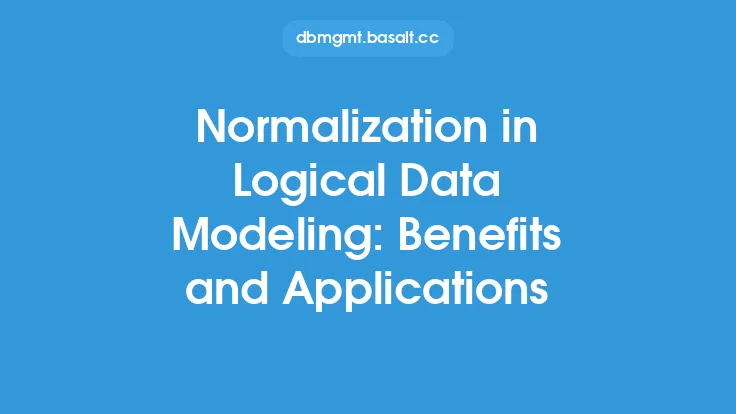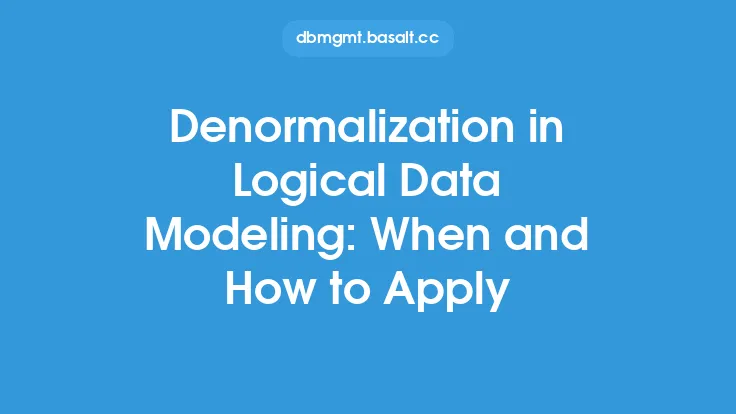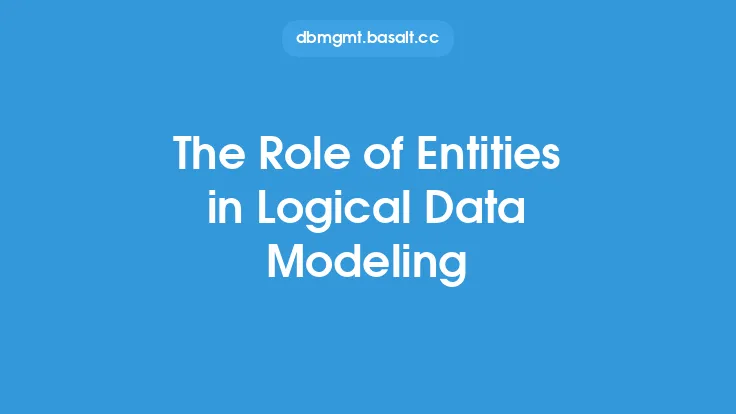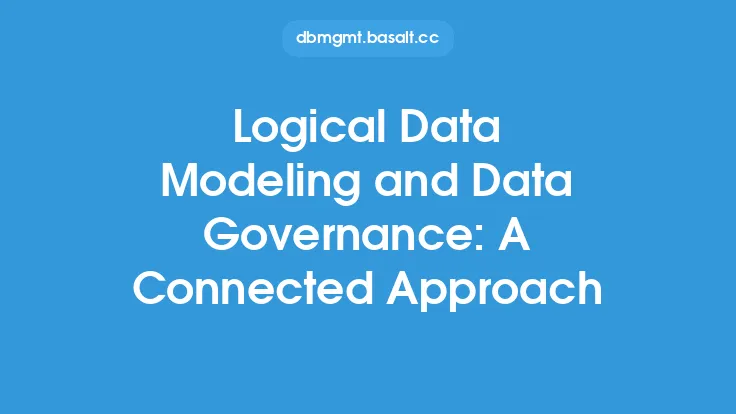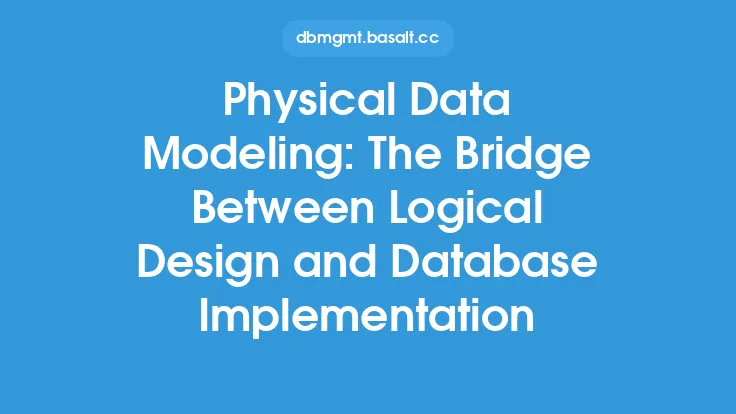In the realm of data modeling, logical data modeling plays a crucial role in defining the structure and organization of data within a database. It involves creating a conceptual representation of the data, including entities, attributes, and relationships, to ensure that the data is consistent, scalable, and easy to maintain. One of the fundamental components of logical data modeling is the definition of attributes and data types, which are essential for determining the characteristics of the data and ensuring its integrity.
Introduction to Attributes
Attributes are the individual elements of data that describe an entity, such as a customer's name, address, or phone number. They are the basic building blocks of a logical data model and are used to define the characteristics of an entity. Attributes can be further categorized into different types, such as simple attributes, composite attributes, and multivalued attributes. Simple attributes are single values that describe an entity, while composite attributes are made up of multiple simple attributes. Multivalued attributes, on the other hand, can have multiple values for a single entity.
Data Types
Data types are an essential aspect of logical data modeling, as they define the type of data that can be stored in an attribute. Data types determine the format, size, and range of values that can be stored in an attribute, ensuring that the data is consistent and accurate. Common data types include integer, string, date, time, and boolean. Each data type has its own set of rules and constraints, such as the maximum length of a string or the range of values for an integer. Data types are critical in ensuring data integrity, as they prevent invalid or inconsistent data from being stored in the database.
Attribute Properties
Attributes in a logical data model have several properties that define their behavior and characteristics. These properties include nullability, uniqueness, and optionality. Nullability determines whether an attribute can have a null value, while uniqueness ensures that each value in an attribute is unique. Optionality defines whether an attribute is required or optional. Understanding these properties is essential in designing a logical data model that meets the requirements of the application or system.
Attribute Relationships
Attributes can have relationships with other attributes, which are essential in defining the structure and organization of the data. These relationships can be categorized into different types, such as one-to-one, one-to-many, and many-to-many. One-to-one relationships occur when an attribute is related to only one other attribute, while one-to-many relationships occur when an attribute is related to multiple other attributes. Many-to-many relationships occur when multiple attributes are related to each other. Understanding these relationships is critical in designing a logical data model that accurately represents the data and its relationships.
Data Type Conversion
In some cases, it may be necessary to convert data from one data type to another. This can occur when integrating data from different sources or when migrating data to a new system. Data type conversion can be complex and requires careful planning to ensure that the data is accurate and consistent. It involves understanding the rules and constraints of each data type and ensuring that the converted data meets the requirements of the target system.
Best Practices for Defining Attributes and Data Types
Defining attributes and data types is a critical aspect of logical data modeling, and following best practices can ensure that the data model is accurate, consistent, and scalable. Some best practices include using standardized data types, defining attributes with clear and concise names, and ensuring that attributes are properly documented. Additionally, it is essential to consider the data integrity constraints, such as nullability and uniqueness, when defining attributes and data types.
Common Challenges and Pitfalls
Defining attributes and data types can be challenging, and there are several common pitfalls to avoid. One of the most common challenges is ensuring data consistency across the database, which can be achieved by using standardized data types and defining attributes with clear and concise names. Another challenge is handling data type conversions, which requires careful planning and understanding of the rules and constraints of each data type. Additionally, it is essential to consider the scalability and flexibility of the data model, ensuring that it can adapt to changing requirements and data structures.
Conclusion
In conclusion, attributes and data types are fundamental components of logical data modeling, and understanding their characteristics and properties is essential for designing a robust and scalable data model. By following best practices and avoiding common pitfalls, data modelers can ensure that their data model is accurate, consistent, and meets the requirements of the application or system. As data modeling continues to evolve, it is essential to stay up-to-date with the latest trends and innovations in attribute and data type definition, ensuring that data models remain relevant and effective in supporting business needs.
